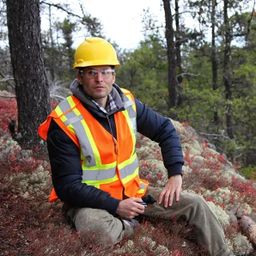General Session (Dendroecology, PT1)
My Session Status
Sub Sessions
Climate change poses an existential threat to trees, given our understanding of the importance of climate in shaping their geographic distributions. Climate envelope models are commonly used to predict how species will respond to climate change. These models give rise to the leading edge-trailing edge paradigm for range change: populations at the cool edge of a species’ distribution are expected to benefit from warming, whereas populations at the warm edge are expected to decline. We chall...
During the 21st century, the boreal biome has warmed at rates 3-4 times the global average, impacting forests directly through changes in temperature and precipitation and indirectly through acceleration of disturbances including permafrost thaw and wildfire. Despite this, little is known about the ability of boreal trees to adapt in the face of such rapid environmental changes. Warming-induced growth rate increases are predicted for the boreal biome, but these would be largely dependent o...
Tree radial growth is influenced by various climatic and non-climatic factors, which can complicate the extraction of climate signals in tree rings. We investigated the disturbance impact on tree ring width (RW) and latewood blue intensity (BI) chronologies of Norway spruce in Carpathian Mountains. Aiming to explore the extent to which disturbance can affect the expression of temperature signals in tree rings. Nearly 15000 tree cores from 34 sites were collected and analyzed. Disturbance t...
Forest disturbances and tree growth are major drivers of dynamics and long-term carbon storage in forests. Combining forest inventory data and tree-ring analysis allows for a retrospective estimate of aboveground forest biomass (AGB) and disturbance dynamics at decadal to centennial scales, both being directly related to net primary productivity (NPP). We used this combined approach to estimate precisely-dated ages of aboveground carbon in over 20 temperate old-growth forests in Western Eu...
Growing concerns about vulnerabilities of boreal forests to climate change and disturbances warrants additional information about their impacts on the growth of dominant tree species in different surrounding environments. To address these concerns, we investigated how the surrounding environment influences the growth of such trees and their responses to climate and insect epidemics in stands of eastern Canada’s boreal forest. For this, we focused on 96 black spruce, jack pine, and tremblin...





Discussion